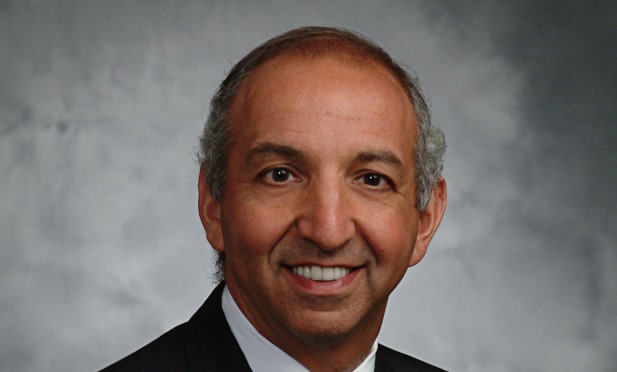 Thomas says demand for logistics space is through the roof, with users taking whatever space they can find.
Thomas says demand for logistics space is through the roof, with users taking whatever space they can find.
DALLAS—With demand for high-quality logistics space continuing at record levels, Transwestern Development Co. is expanding its team at the most senior levels. Its national logistics group, previously called Ridge, has added industry veteran John Thomas at the helm as managing partner. Based in Dallas, Thomas will oversee the firm's industrial pipeline and manage regional offices across the country.
In addition to Thomas, Transwestern Development Co. has recruited Stephen Batcheller as regional partner to facilitate the firm's expansion on the West Coast. Based in Orange County, Batcheller previously worked at Panattoni Development Co. as a partner, where he was responsible for all aspects of the company's office and industrial activities in the Inland Empire, Orange County and a portion of Los Angeles County.
In this exclusive, Thomas and Batcheller recently shared insights into the expansion, state of the logistics market, approach to new projects and growth initiatives.
GlobeSt.com: Why is now the right time to expand your logistics group?
Thomas: The continued expansion of e-commerce has prompted unprecedented demand for logistics space across the country. Design elements are still adapting to the logistics needs of e-commerce players, making it a very interesting time to be involved in real estate development and design.
Batcheller: Not only does this present an opportunity to meet pent-up demand from users, but also investors looking to place capital. Domestic and international investors have billions in dry powder slated for high-quality industrial and logistics space. Investors are particularly interested in the Southern California and other gateway markets, demonstrated by the continued increase in capital allocations to logistics real estate investment over the past five years.
GlobeSt.com: What is the current state of the logistics sector nationally and in Southern California?
Thomas: As mentioned, demand for logistics space is through the roof, with users taking whatever space they can find. However, more than 90% of existing industrial buildings are not designed for e-commerce tenants. E-commerce companies are demanding features such as larger truck staging areas, higher ceilings, a higher number of doors per square foot, large speed bays and increased trailer storage. The challenge is that this means more building on less land, which creates less return for the developer.
Batcheller: Southern California is one of the most active logistics markets in the world, and we've seen record-low vacancy rates for the past several years. Tenants are willing to pay premium rents for urban infill locations to expedite delivery to consumers. We don't foresee this trend slowing anytime soon.
GlobeSt.com: What is the logistics group's approach to new projects? What types of product is the group delivering?
Thomas: TDC will continue to provide high-quality modern facilities that are designed to meet the requirements for today's sophisticated e-commerce companies. This includes state-of-the-art large-scale distribution centers in major logistics markets, as well as urban infill locations with strong demographics.
GlobeSt.com: What are some notable projects the logistics group is currently developing or has already completed?
Thomas: We have executed 6.1 million square feet of large-scale distribution space across five separate buildings within the RidgePort Logistics Center outside of Chicago. In the Dallas-Fort Worth metroplex, Park 20/360 will encompass eight state-of-the-art distribution buildings totaling over 1.6 million square feet. The project is on schedule to deliver in 2019.
Batcheller: We are currently under construction on San Bernardino One, a two-phase logistics center totaling approximately 720,000 square feet in the Inland Empire region of Southern California. So far, occupier demand has been excellent. We expect to announce additional new developments in the near future.
GlobeSt.com: What are the growth initiatives for the logistics group? What markets are you targeting for future growth?
Thomas: We currently have regional offices in Houston, Dallas-Fort Worth, Chicago, Los Angeles and Atlanta. During the past three years, we have completed or commenced projects in 10 different markets from Southern California to Pennsylvania. We will continue to deepen our bench of experts in the existing regional offices, as well as tap new opportunities and add personnel in markets that are well-positioned for growth, including Pennsylvania-New Jersey, the Washington-Baltimore corridor, Northern California, Southern Florida and the Pacific Northwest. We are primarily focused on organic growth for the near future but are always on the lookout for potential M&A opportunities that present a strong cultural fit with Transwestern.
© Touchpoint Markets, All Rights Reserved. Request academic re-use from www.copyright.com. All other uses, submit a request to [email protected]. For more inforrmation visit Asset & Logo Licensing.







